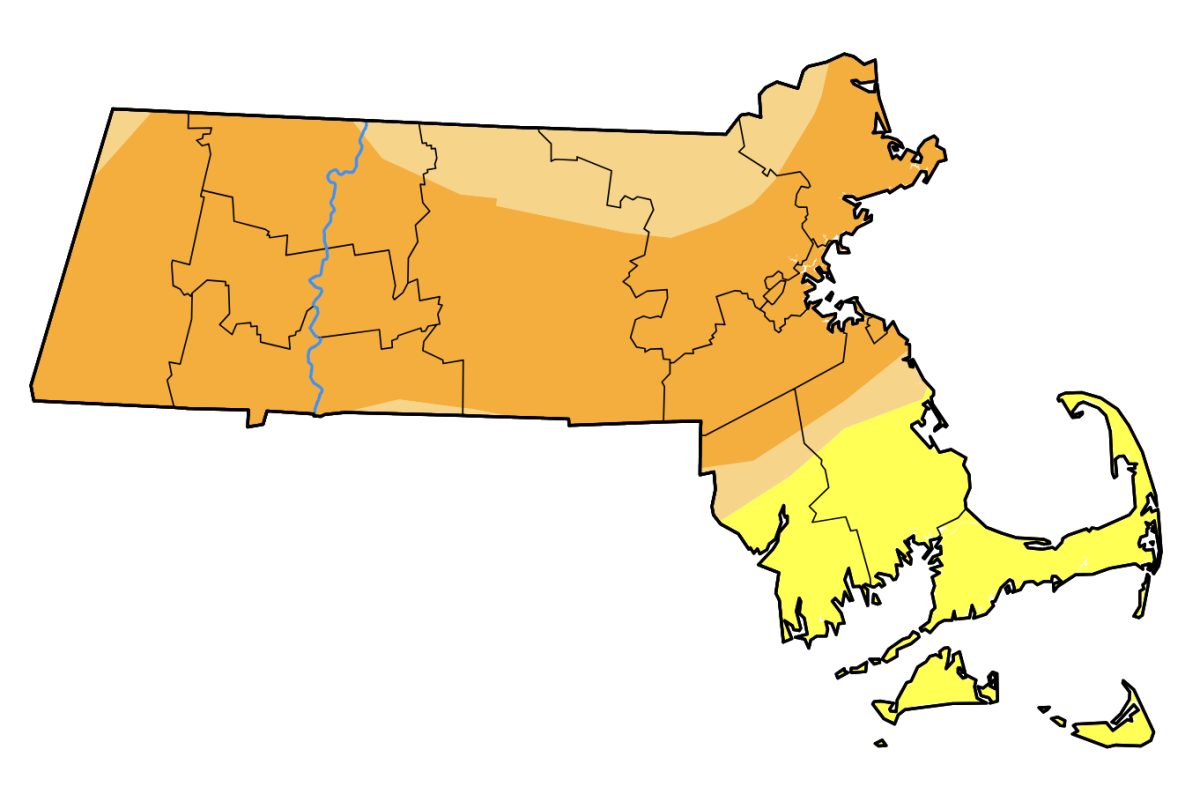You’ve probably noticed something missing this fall – significant rainfall. That’s led to a dramatic increase in brush fires throughout Massachusetts, scarring landscapes and causing hazy skies.
As of earlier this week, more than 450 fires had burned over 1,500 acres since the beginning of October because of drought conditions.
So far, Plymouth hasn’t faced the serious blazes that have plagued towns such as Middleton. The US Drought Monitor lists conditions in the Plymouth area as “abnormally dry,” or “D0,” compared with “severe drought,” or “D2” in much of the state.
Still, Plymouth fire officials are on high alert. Fire Chief Neil Foley is reminding residents that there is ban on all outdoor burning in place. (The town’s open burning season normally runs from Jan. 15 through April 15, but a permit is required.)
“The risk of outdoor fires starting brush and wildfires is extremely high right now,” Foley said in a press release.
The National Weather Service has issued a so-called red flag warning for the entire state and is likely to keep doing so until there is enough rainfall to saturate the ground. The weather service said a red flag “means warm temperatures, very low humidities, and stronger winds are expected to combine to produce an increased risk of fire danger.”
The long-range forecast for Plymouth calls for continued dry weather until at least next Thursday, when there is a 40 percent chance of showers.
Normally, an average of 15 wildfires are reported statewide in October, according to the Massachusetts Department of Fire Services. This year, there were about 200. And as of Tuesday afternoon, 261 fires had burned 696 acres so far this month.
Earlier this week, Governor Maura Healey thanked firefighters and other first responders who have been battling the stubborn fires since early autumn.
I’m grateful to the firefighters and first responders who have been working hard, day in and day out, to keep their communities safe,” Healey said. “We appreciate the immense effort and sacrifice they are putting in, and the risks they are facing.”
Plymouth has been the scene of serious outdoor fires before, including a massive May 25,1964, conflagration that enveloped a swath of Myles Standish State Forest and beyond.
“Two days earlier flames had consumed 800 acres of the forest, but firefighters believed they had the blaze under control,” a post on the MassMoments site says. “On the 25th, the wind shifted, and with terrifying speed, the re-ignited fire moved from west to east, destroying everything in its path. It stopped only when it reached White Island Pond. Fifty-five hundred acres and 26 structures had been destroyed.”
In its press release, the Plymouth Fire Department offered these tips to minimize the possibility of a fire:
- Extinguish smoking materials in a sturdy ashtray with water or sand. Never toss cigarette butts, matches, or other smoking materials out a car window or over the edge of a balcony, stub them out on stairs or railings.
- Use caution with lawnmowers, leaf blowers, all-terrain vehicles, and other power equipment. The engines can become hot enough to ignite dry leaves and grass.
- Properly dispose of ashes or coals from fireplaces, wood stoves, or grills in a metal can, douse it with water, and secure it with a tight-fitting lid. These ashes can remain hot enough to reignite and cause a fire.
- Follow instructions from local safety officials.
- Refrain from outdoor cooking and heating. Sparks and embers from chimneys, fire pits, and grills can easily ignite dry vegetation, debris, and overhanging branches.
More information about outdoor fire safety can be found here.
Mark Pothier can be reached at mark@plymouthindependent.org.

